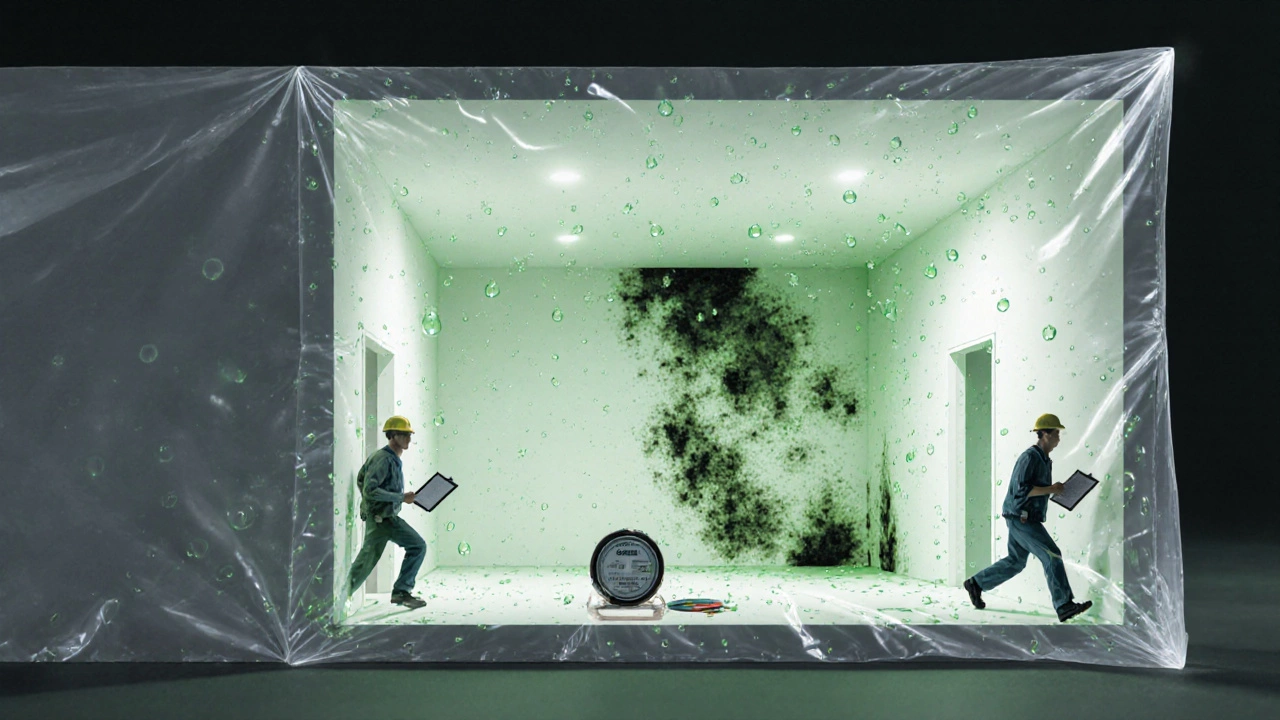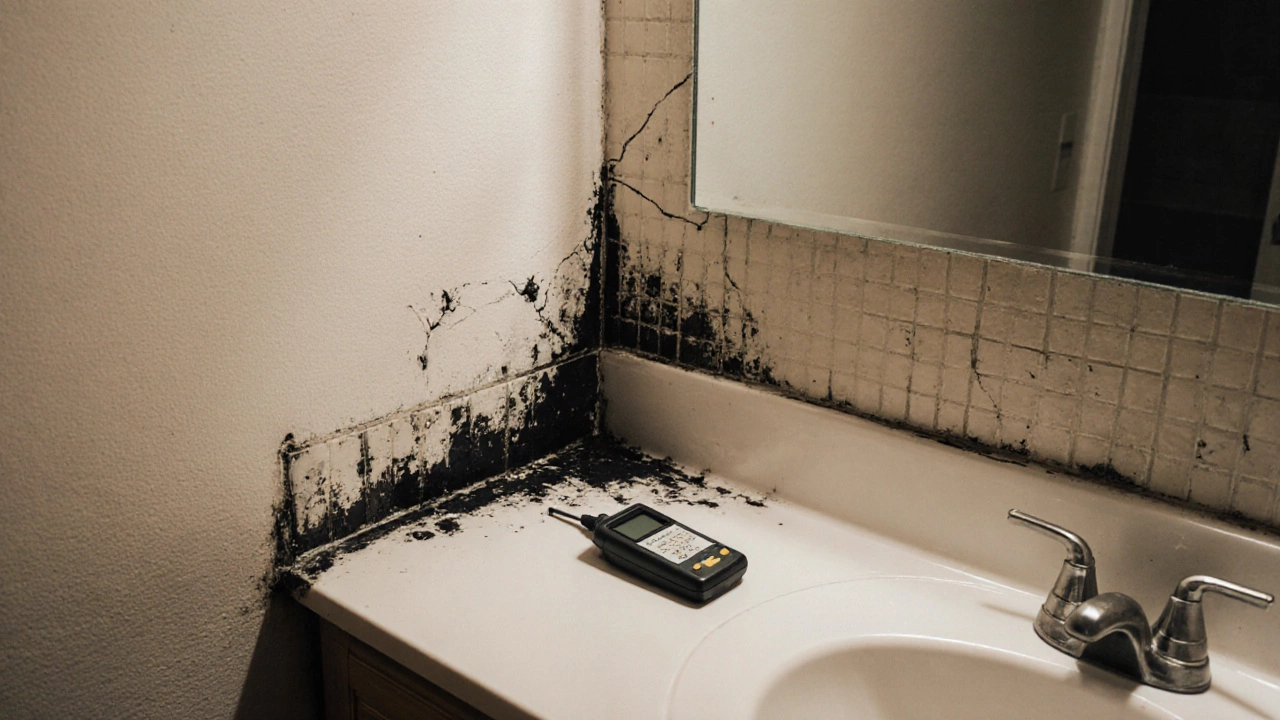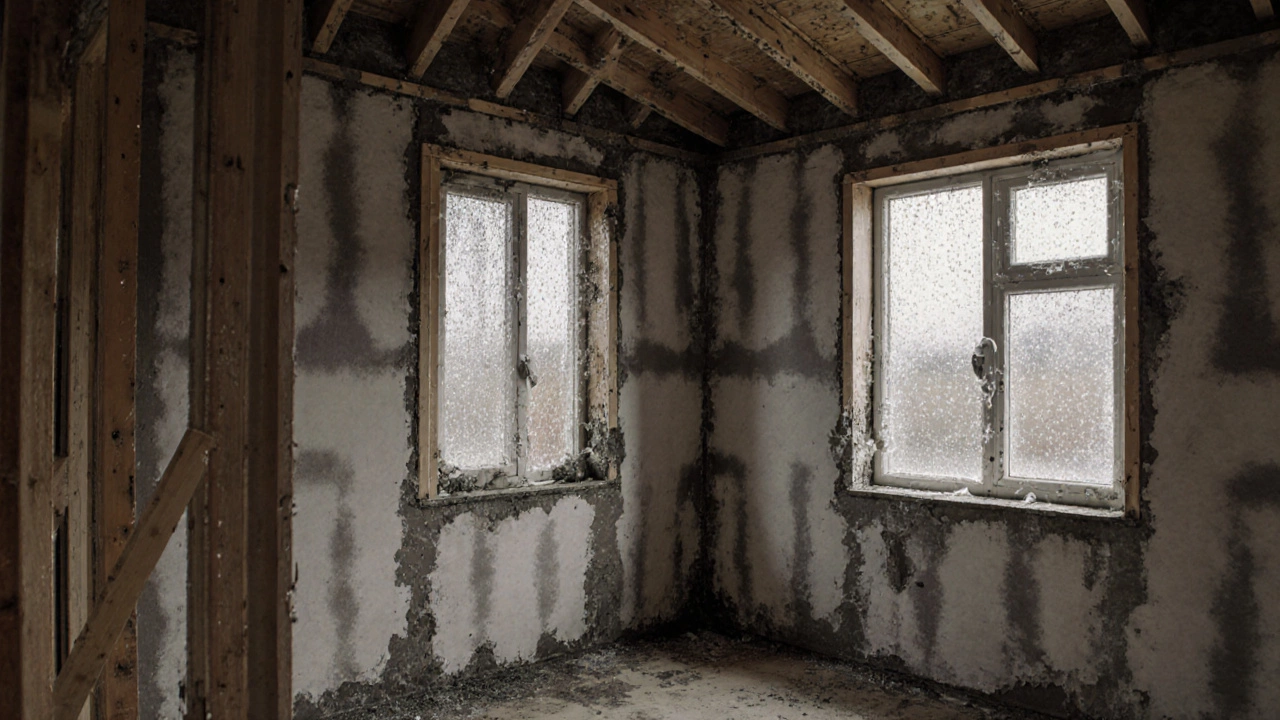New Build Drying Time Calculator
How long until your new build is safe from mold?
Based on moisture content and building materials, this tool estimates when your new home will dry out enough to prevent mold growth. The article explains why drying time is critical to avoid mold in new builds.
Estimated Drying Time
Walk into a brand-new home and smell something musty? You’re not alone. In 2024, over 1 in 5 new builds in the UK showed signs of mold within the first year-according to the Building Research Establishment. It’s not a fluke. It’s not bad luck. It’s a direct result of how homes are built today.
Speed Over Dryness
Builders are under pressure to finish homes faster. Buyers want keys in hand. Banks want returns. Developers need to turn sites around in months, not years. So they rush the drying process. Concrete foundations, plaster walls, timber frames-they’re all still wet when the walls go up and the insulation gets installed.Water doesn’t vanish just because the house looks finished. It gets trapped. A typical new build in England can hold up to 10,000 liters of water from construction alone. That’s the weight of a small car. And if the ventilation isn’t turned on right away, that moisture has nowhere to go. It settles into the gaps, behind drywall, under floorboards. Mold spores? They’re everywhere. All they need is dampness and 48 hours.
Modern Insulation Traps Moisture
New homes are tightly sealed. That’s supposed to be a good thing-better energy efficiency, lower bills. But tight seals mean no air movement. No airflow means no drying. Old homes had gaps. Drafts. Cracks. They breathed. Modern homes? They’re like plastic bags.High-performance insulation like spray foam and rigid board is great at keeping heat in. But it’s also great at keeping moisture in. Once water gets behind it, it’s stuck. You can’t see it. You can’t feel it. But mold grows behind the insulation, in the cavity walls, under the floor. By the time you notice it-usually from a black speck on the bathroom tile-it’s already spread.
Builders Skip the Moisture Test
There’s a simple rule in construction: never install drywall or insulation over wet materials. But in practice? Many builders don’t test for moisture. They don’t use hygrometers. They don’t wait for the timber to drop below 16% moisture content. They just cover it up.A 2023 survey of 120 UK builders found that 43% never checked moisture levels before closing up walls. Why? Because it adds time. And time costs money. One builder in Manchester told me, "We’ve got 17 homes on site. If I wait for each one to dry properly, I’ll lose my next contract."
Plumbing Leaks Get Hidden
New homes have more pipes than ever-underfloor heating, smart showers, multiple bathrooms. And they’re installed fast. Sometimes, joints aren’t sealed right. Pressure tests are skipped. Water drips slowly into wall cavities or under tiles. No one notices because the house is empty. No one’s showering, washing dishes, or running the washing machine daily to spot a leak.By the time the new owners move in, the leak has been running for weeks. The wall behind the vanity? Wet. The subfloor under the en-suite? Soggy. Mold follows. And because it’s hidden, it grows unchecked for months.

Windows and Ventilation Are Afterthoughts
In the 1980s, builders installed trickle vents in windows as standard. Now? They’re optional. Many new builds come without them. Or they’re installed but blocked by paint, plaster, or furniture.And extractor fans? Often undersized. A bathroom fan rated for 15 liters per second won’t handle a 10-minute shower in a modern, sealed bathroom. Condensation builds on the walls. The mirror fogs. The corners go dark. That’s mold. And if the house doesn’t have a mechanical ventilation system (MVHR), there’s no way to remove that moisture.
Weather Plays a Role-But It’s Not the Main Cause
England’s damp climate gets blamed a lot. Rain. Fog. Low sunshine. But mold isn’t caused by outside weather. It’s caused by inside conditions. A house built in Cornwall with the same construction flaws as one in Manchester will have the same mold problems. The difference? The one in Manchester might take longer to show up because it’s colder, and less moisture evaporates.The real issue? Building practices. Not the weather.
What You Can Do Before You Move In
If you’re buying a new build, don’t assume it’s mold-free. Here’s what to do:- Ask for the moisture report. If they don’t have one, walk away.
- Check for ventilation. Are there trickle vents? Are they open? Are extractor fans installed in bathrooms and kitchen?
- Look for stains. Dark patches behind radiators, under windows, in corners. These are red flags.
- Smell the air. Musty? Don’t ignore it.
- Wait. If possible, delay moving in for 4-6 weeks after practical completion. Let the house dry out with windows open and heating on low.

What Builders Should Be Doing
It’s not rocket science. Builders know the risks. Here’s what should be standard:- Wait for timber moisture content below 16% before installing drywall.
- Use moisture meters on every wall before closing it up.
- Install MVHR systems in all new builds-no exceptions.
- Fit trickle vents in every window, and make sure they’re not painted over.
- Conduct a 72-hour ventilation test before handover.
Some builders are doing this. But most aren’t. Because it costs more. And buyers? They’re not asking for it.
The Cost of Ignoring Mold
Mold isn’t just ugly. It’s dangerous. Long-term exposure to black mold (Stachybotrys chartarum) can cause respiratory problems, headaches, and worsen asthma. The NHS estimates mold-related health costs in the UK at £120 million a year.And financially? Repairing mold damage in a new build can cost £5,000 to £20,000. Insurance often won’t cover it if it’s due to poor construction. And builders? They’ll say it’s "normal condensation" and deny responsibility.
It’s Not Your Fault
If you’ve moved into a new home and found mold, you didn’t do anything wrong. You didn’t leave the shower running too long. You didn’t forget to open the window. You bought a house built too fast, with materials that trap moisture, and systems that don’t remove it.The system failed. Not you.
What’s Changing?
The UK government’s Building Safety Act 2022 is starting to change things. New regulations require developers to prove homes are dry before handover. Some local councils are now requiring moisture reports as part of building control sign-off.But it’s slow. And enforcement is patchy. Until buyers demand better-until we stop rewarding builders who cut corners-mold in new builds will keep happening.
Ask questions. Demand proof. Don’t sign off on a home that’s still wet. Your health-and your wallet-will thank you.
Is mold in new builds common?
Yes. Around 20% of new builds in the UK show mold within the first year. It’s not rare-it’s expected in homes built too fast without proper drying. The problem is growing as builders prioritize speed over moisture control.
Can I claim for mold in a new build?
Maybe. Most new builds come with a 10-year warranty (like NHBC). If mold is due to poor construction-like trapped moisture or faulty ventilation-you can file a claim. But you’ll need proof: moisture reports, photos, and expert assessment. Builders often deny responsibility, so document everything from day one.
How long does it take for mold to grow in a new build?
Mold can start growing in as little as 48 hours if conditions are right: damp surface, warm temperature, and no airflow. In new builds, moisture from construction materials can take weeks or months to dry out-giving mold plenty of time to spread before anyone notices.
Will opening windows help with mold in a new home?
Yes, but only temporarily. Opening windows helps reduce condensation and flush out moisture-but it won’t fix the root problem. If the walls, insulation, or floor are still wet inside, mold will keep coming back. Long-term, you need proper ventilation systems like MVHR and trickle vents.
Do all new builds have mold?
No. Not all. But many do-especially those built under tight deadlines or by companies cutting corners. Homes with proper moisture control, ventilation systems, and drying time rarely have mold. It’s not inevitable-it’s a choice.
